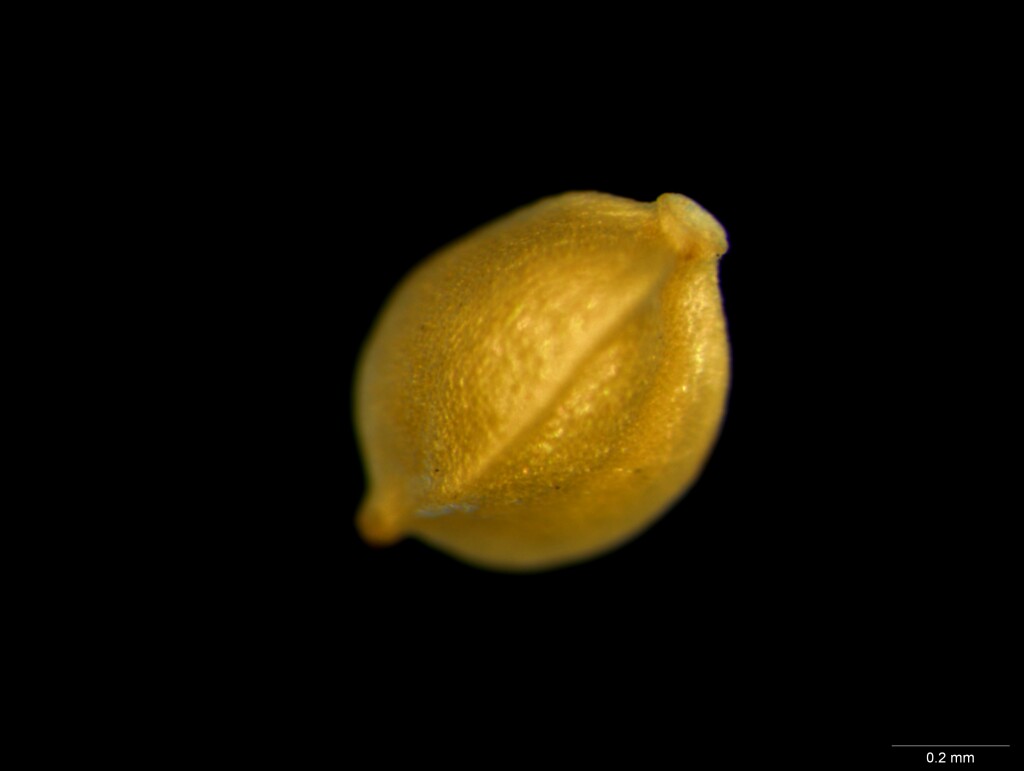Isolepis gaudichaudiana
KunthSmall tufted annual or possibly perennial. Culms filiform, 3–15 cm high. Leaf-blades to 4 cm long. Spikelets 2–8 per inflorescence, rarely a solitary spikelet, 3.5–6 mm long; involucral bract 1–6 cm long (usually at least one-third as long as culm, often as long as culm); glumes obtuse, shortly mucronate, sides indistinctly and irregularly several-nerved, whitish to straw-coloured, 1.2–2 mm long; stamen 1; style 3-fid. Nut ± equally trigonous, angles well-defined, ellipsoid to broad-ellipsoid, minutely pitted, glistening, straw-coloured, about half as long as glume, 0.6–0.8 mm long, 0.5–0.7 mm diam. Flowers summer.
GipP, Gold, CVU, EGL, EGU, HNF, MonT, VAlp. Also NSW, ACT, Tas. Apparently uncommon, known from a few scattered records from the coast to subalps, where occurring in moist open situations.
Apparently intermediate in characters between Isolepis inundata and I. montivaga. Isolepis montivaga has very similar spikelets but differs in having 2 or 3 stamens and a larger nut (to c. 1.3 mm long, about two-thirds as long as glume), which is unequally trigonous with the third angle often not clearly defined, and darker yellow to grey-brown. Isolepis inundata has a solitary stamen like I. gaudichaudiana, but the involucral bracts are always much shorter (to 1.5 cm long) than the culms, unlike both I. montivaga and this species.
Wilson, K.L. (1994). Cyperaceae. In: Walsh, N.G.; Entwisle, T.J., Flora of Victoria Vol. 2, Ferns and Allied Plants, Conifers and Monocotyledons, pp. 238–356. Inkata Press, Melbourne.
 Spinning
Spinning
